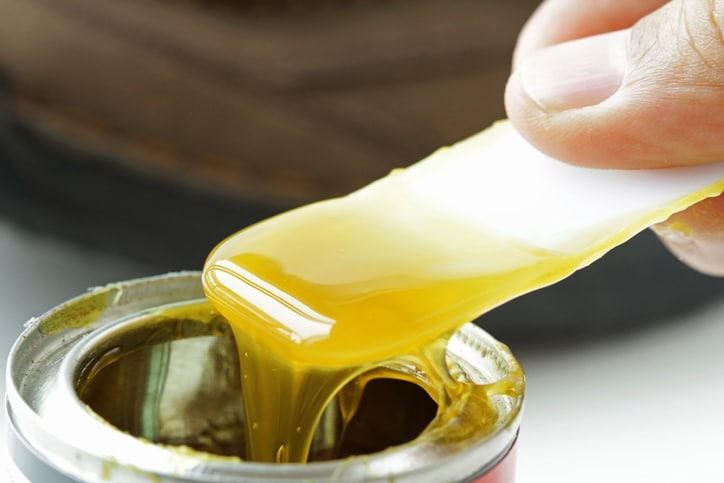
Hexane, or N-Hexane (chemical formula: C6H14), is an alkane of six carbon atoms. There are 5 hexane isomers of which n-hexane is the unbranched isomer. Hexane is made from crude oil and in its pure form, it is colourless with a slightly disagreeable odour. It is easily evaporated into the air and dissolves only slightly in water.
Hexane is used in laboratories, generally to produce other solvents by combining hexane with similar chemicals. The main use for these solvents containing hexane is to extract vegetable oils from crops such as soybeans, flax, peanuts, and safflower seed.
Hexane is also used as a cleaning agent in the textile, furniture, shoemaking and printing industries. Hexane is also an ingredient of special glues used in the roofing, shoe and leather industries.

As industrial use is far more common than household use, you are most likely to be exposed to hexane in the workplace.
Because hexane evaporates very quickly, the most common route of exposure to the chemical is from inhalation. As petrol contains hexane, nearly everyone is exposed to minute amounts of hexane in the air with monitoring data indicating that it is a widely occurring atmospheric pollutant. Symptoms of hexane inhalation include; mild Central Nervous System (CNS) depression, causing effects such as; drowsiness, dizziness, giddiness, slight nausea and headaches.
Ingestion of insignificant amounts of hexane is not thought to be a cause for concern, however ingesting large amounts of the chemical may cause nausea and vomiting.
Skin and eye exposure can also occur with hexane and may cause dermatitis (itching and inflammation of the skin) and irritation of the eyes and throat.
Hexane is highly flammable and its vapours can be explosive, hence proper storage must be prioritised.
If inhaled, remove the person from the area and lay the patient down. Perform CPR if required/qualified. Seek medical attention without delay.
In the event of ingestion, rinse the mouth out with water and do not induce vomiting. If vomiting occurs as a result anyway, hold the patient’s head down, lower than their hips to avoid the possibility of the toxic chemical entering the lungs. Seek medical attention.
If skin exposure occurs; remove all contaminated clothing, footwear and accessories and cleanse the affected area with soap and water. Contaminated clothing must be washed prior to wearing again. Seek medical attention if irritation occurs.
If eye exposure occurs, flush them with water immediately, ensuring you do not forget to wash under the eyelids. Contact a medical professional immediately if pain persists. Removing contact lenses should be undertaken by skilled personnel.
Emergency eyewash fountains and safety showers should be accessible in the immediate area of the potential exposure to the chemical.
Adequate ventilation is particularly important when handling hexane due to the toxicity of the vapours. Local exhaust ventilation should be installed if adequate ventilation exists naturally.

Proper PPE, such as safety glasses with side shields, chemical goggles, chemical protective gloves, safety footwear and a PVC protective suit are all appropriate to protect yourself from the dangers of hexane.
Chemwatch has the largest collection of SDS in the world. For a FREE copy of the Chemwatch-authored SDS for Hexane, click the button below.